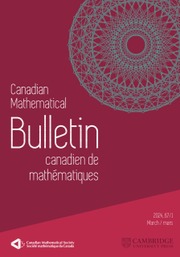No CrossRef data available.
Article contents
Bridging colorings of virtual links from virtual biquandles to biquandles
Published online by Cambridge University Press: 14 March 2025
Abstract
A biquandle is a solution to the set-theoretical Yang–Baxter equation, which yields invariants for virtual knots such as the coloring number and the state-sum invariant. A virtual biquandle enriches the structure of a biquandle by incorporating an invertible unary map. This unary operator plays a crucial role in defining the action of virtual crossings on the labels of incoming arcs in a virtual link diagram. This leads to extensions of invariants from biquandles to virtual biquandles, thereby enhancing their strength.
In this article, we establish a connection between the coloring invariant derived from biquandles and virtual biquandles. We prove that the number of colorings of a virtual link L by virtual biquandles can be recovered from colorings by biquandles. We achieve this by proving the equivalence between two different representations of virtual braid groups. Furthermore, we introduce a new set of labeling rules using which one can construct a presentation of the associated fundamental virtual biquandle of L using only the relations coming from the classical crossings. This is an improvement to the traditional method, where writing down a presentation of the associated fundamental virtual biquandle necessitates noting down the relations arising from the classical and virtual crossings.
- Type
- Article
- Information
- Copyright
- © The Author(s), 2025. Published by Cambridge University Press on behalf of Canadian Mathematical Society
Footnotes
M.E. is partially supported by Simons Foundation collaboration grant 712462. M.S. has received funding from Fulbright-Nehru Postdoctoral Fellowship grant 2865/FNPDR/2022.



